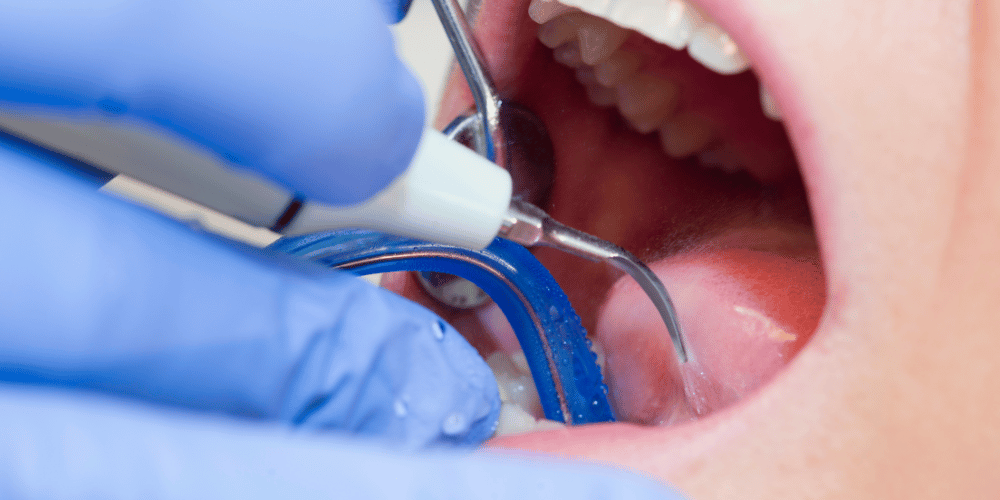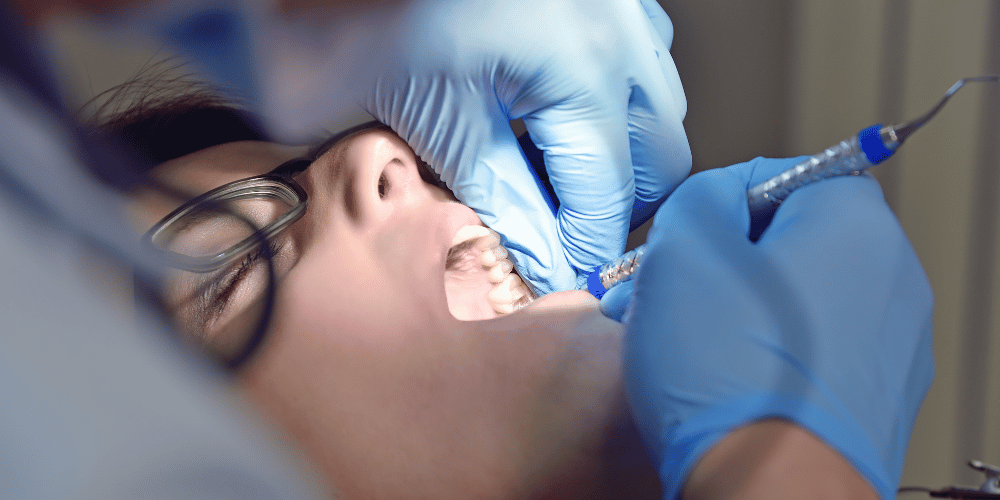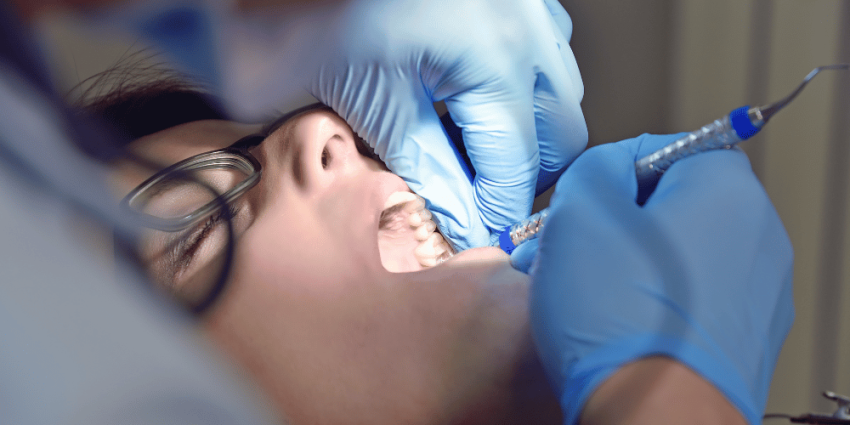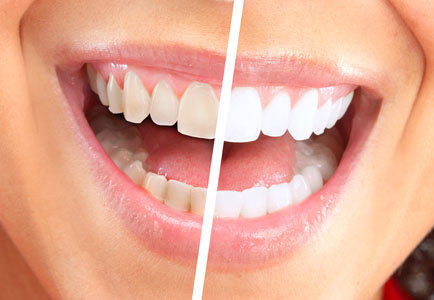Did you know that tartar buildup on your teeth can lead to tooth decay, bad breath, and gum disease? Unfortunately, it’s one of those dental issues that isn’t easy to avoid. This is why many people turn to the dentist for help with removing tartar from their teeth. But what if you don’t want to go to the dentist? Is there an easier way to remove tartar from your teeth without having a professional do it? In this blog post, we will discuss how to effectively remove tartar from your teeth without going to the dentist. Read on and learn about the different methods you can use!
What is tartar?
Tartar is a hard, yellowish deposit that can form on your teeth. It’s made up of plaque that has hardened, as well as food particles and other debris. Tartar can only be removed by a dentist or dental hygienist.
If tartar isn’t removed, it can lead to gum disease. Gum disease is an infection of the gums that can eventually lead to tooth loss.
There are some things you can do to help prevent tartar from forming on your teeth in the first place. These include:
-Brushing your teeth twice a day with a toothpaste that contains fluoride
-Flossing daily
-Eating a healthy diet
-Visiting your dentist or dental hygienist regularly for cleanings and checkups

What causes tartar buildup?
There are many things that can cause tartar buildup on teeth, including:
– Poor dental hygiene: If you don’t brush and floss your teeth regularly, plaque can build up and harden into tartar.
– Eating sugary or starchy foods: These foods can contribute to plaque buildup.
– Drinking coffee, tea, or red wine: These beverages can stain your teeth, making it more difficult to remove tartar.
– Smoking: Smoking is a major risk factor for tartar buildup.
How to remove tartar at home
Tartar, also known as calculus, is a hard deposit that can form on your teeth. It’s made up of plaque that has hardened and become stuck to your teeth. Tartar can cause gum disease and tooth decay. It can also make your teeth look yellow or brown.
You can remove tartar at home with special dental tools or an electric toothbrush. You can also visit your dentist for a professional cleaning.
To remove tartar at home:
• Use a soft-bristled toothbrush and brush your teeth twice a day.
• Floss daily to remove plaque from between your teeth.
• Use an antibacterial mouthwash to help reduce plaque and tartar buildup.
• Try using a tongue scraper to remove bacteria from your tongue, which can also help reduce plaque and tartar buildup.
When to see a dentist for tartar removal
If your tartar buildup is extensive, you may need to see a dentist for professional cleaning. tartar removal is not a do-it-yourself project. You can’t remove tartar at home with toothpaste or other common household products. only a trained dental professional can safely and effectively remove tartar from your teeth.
If you have tartar buildup, schedule an appointment with your dentist for professional cleaning. Your dentist can use special tools to remove the tartar, and may also perform a deep cleaning to remove plaque that has built up in hard-to-reach areas.
How does tartar form on teeth?
When bacteria and food particles accumulate on teeth, they form a sticky film called plaque. If plaque is not removed, it can harden into tartar. Tartar is a yellow or brown deposit that can only be removed by a dentist or dental hygienist.
When to see a dentist for tartar removal
Tartar, also known as calculus, is a hard deposit that can form on teeth. It’s usually yellow or brown in color and can be very difficult to remove. If you have tartar on your teeth, you may need to see a dentist for professional cleaning.
Tartar forms when plaque (a sticky film of bacteria) isn’t removed from teeth. Plaque can turn into tartar in as little as 48 hours. Tartar buildup can cause gum disease, tooth decay, and bad breath.
If you have tartar on your teeth, you may notice that your gums are red and swollen or bleed easily when you brush your teeth. You might also have bad breath or a foul taste in your mouth.
If you think you have tartar on your teeth, it’s important to see a dentist for professional cleaning. Only a dentist or dental hygienist can remove tartar from teeth. Home remedies and over-the-counter products can help prevent tartar from forming, but they won’t remove it once it’s there.
Use a mouthwash and toothpaste made with tea tree oil.
Tea tree oil is a natural antiseptic and can be used as a mouthwash or toothpaste. It can help to remove tartar from teeth and also helps to kill bacteria in the mouth.
Rinse your mouth with hydrogen peroxide
Before using hydrogen peroxide to remove tartar from your teeth, it’s important to understand that this substance can be dangerous if used in excess. When used correctly, however, hydrogen peroxide can be a safe and effective way to remove tartar from your teeth.
To use hydrogen peroxide to remove tartar from your teeth, start by mixing equal parts water and hydrogen peroxide. Then, use a soft-bristled toothbrush to gently scrub your teeth with the mixture. Be sure to avoid scrubbing too hard, as this could damage your enamel.
After you’ve scrubbed your teeth with the hydrogen peroxide mixture, rinse your mouth thoroughly with water. You should also avoid eating or drinking for at least 30 minutes after using hydrogen peroxide, as it can cause irritation if ingested.
Brush your teeth after meals.
It’s important to brush your teeth after meals, especially if you’ve eaten something acidic. Acidic foods can soften your tooth enamel, making it more susceptible to damage. Brushing immediately after eating can help remove any acid that’s been left on your teeth.
Reduce consumption of foods that stain teeth.
It’s no secret that many of the foods we love can cause some serious staining on our teeth. But did you know that there are ways to enjoy these foods without sacrificing the whiteness of your smile? Here are a few tips for reducing the consumption of foods that stain teeth:
1. Rinse your mouth with water after eating. This will help to remove any food particles that may be stuck to your teeth and cause staining.
2. Avoid sugary drinks, such as soda and juice. These beverages can coat your teeth in sugar and cause discoloration.
3. Use a straw when drinking coffee, tea, or red wine. This will help to prevent the liquid from coming into contact with your teeth and causing stains.
4. Eat crunchy fruits and vegetables like apples, celery, and carrots. These foods act as natural tooth brushes and can help to remove any unwanted stains from your teeth.
5. Brush your teeth regularly with a whitening toothpaste. This will help to keep your teeth looking their best by removing any existing stains and preventing new ones from forming.

Limit dry mouth by sipping water throughout the day.
Saliva is your mouth’s best friend when it comes to preventing tooth decay and gum disease. When your mouth is dry, you are more likely to develop cavities and other problems. Sipping water throughout the day will help keep your mouth moist and healthy.
Water not only helps to prevent dry mouth, but it also washes away food and bacteria that can cause cavities. Be sure to drink plenty of water each day, and avoid sugary drinks that can contribute to tooth decay.
A dentist can clean tarter from your teeth, but at home there are things you can do to remove it yourself
There are a few things you can do to remove tartar from your teeth at home. First, you can brush your teeth with a toothbrush that has stiff bristles. This will help to loosen the tartar on your teeth. You can also use a toothpick or floss to remove tartar from your teeth. Finally, you can use mouthwash to rinse away the tartar from your mouth.
Conclusion
In conclusion, despite the fact that tartar build-up can be a difficult problem to tackle yourself, by following the steps outlined in this article you should be able to effectively remove some of it and keep your teeth healthier. Regular brushing, flossing and rinsing with an antiseptic mouthwash can help reduce tartar build up over time. However, if you still notice persistent problems or feel uncomfortable doing these things on your own, it’s always best to consult a professional dentist for advice.










Leave a Reply